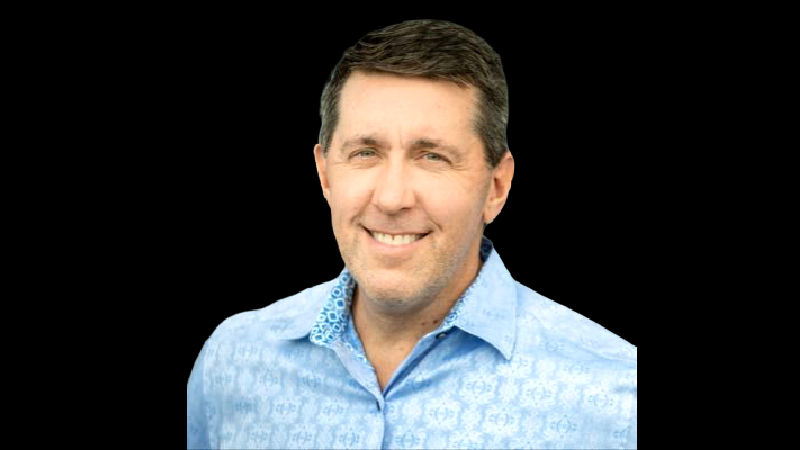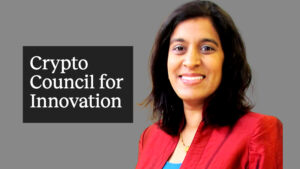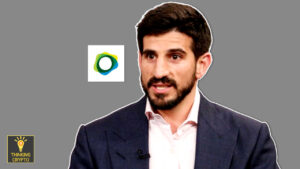In my latest interview with Algorand CEO Sean Ford we discuss the recent protocol upgrade which boosted performance by 5x and increased TPS to 6,000. We also touch on Algorand’s partnerships with FIFA and Napster, CBDCs and governments building on Algorand, crypto bear market, Anthony Scaramucci’s Algorand book, crypto regulations, and much more.
Transcript
Welcome back to the “Thinking Crypto” podcast, your home for cryptocurrency news and interviews. With me today is Sean Ford, who’s the CEO of Algorand. Sean, great to have you back on the show.
- Thanks, Tony. It’s good to be back.
- Sean, for everybody listening, I’m a big Algorand fan, I hold the ALGO token, and there’s been some big updates on your end, and I would love to discuss those things with you. One that I was reading about is the protocol upgrade, which boosted performance by 5x. Tell us about this upgrade and the benefits.
- Yeah, so stepping back, I mean, one of the things that we’ve always committed to is, you know, continuing to try to improve, you know, the performance of the layer one, protocol largely to do a few things. One, we know that with appropriate innovation and improvements to the blockchain itself, it’s gonna just, you know, open up greater opportunities for adoption in particular by traditional industries, or businesses that are looking to move into a more Web 3 or a digital environment. And as you know, traditional companies and traditional businesses, governments, tend not to be the most biggest risk takers or first movers with new tech. So, anything you can do to remove any barriers around, you know, adoption, or people feeling that they can move in and trust a new piece of technology, relatively new piece of technology, you know, that’s a good thing. And so one of the first big upgrades was, you know, the transactions per second on the algorithm blockchain went from around 11, 1200 transactions per second to 6,000, I think a little bit more than 6,000 per second. I believe that’s where it’s performing now. Took, you know, a couple weeks for the changes to propagate globally, but I think it’s there. And so that’s an important one, you know, one, because you’re now at a processing power that’s, you know, significantly higher than a lot of credit card networks and on a global basis at peak capacity. So, that’s a nice hurdle, but I would say that, you know, the thing that we’re most proud of is around the definition of TPS, or if we’re talking about, you know, the 6,000 transaction per second, how we define it and that’s that all transactions are final within the block. So, this sort of sub four second block, you know, three and a half second block and 6,000 transactions per second mean that there’s no looking back in time to verify if something is correct. There’s no waiting an hour to go back and verify if something is correct, or 15 minutes in the case of say, Ethereum. You’ve got, you know, the same sort of performance you saw with Algorand before that in that three and a half seconds you have full and complete finality of the transaction in that block. And then with the additional processing, you know, speed that we have, you know, obviously, it makes it very attractive to traditional industries and businesses moving in. I’m only making this point because I think there’s just a lot of intentional sort of differences of how this is defined and what TPS means. I would also say that this is for any transaction on the Algorand blockchain, it isn’t for, you know, messages that are created by the chain itself to sort of pump up numbers and make it look faster than it is. This is, you know, not restrained by the type of transaction, the size of the transaction. So, that’s a pretty exciting thing, because people trade real things. They don’t just send messages. The second piece to the upgrade is state proofs. And so, Algorand state proofs, there’s a paper that was written about it, a good, I don’t know if it’s two years ago, about implementing and the concept behind it. And I say that because there’s been some recent chatter around where these originated, but Algorand’s paper a couple years ago had had some, you know, pretty clear ideas that in a future world where interoperability became more and more important, and making that, again, removing the friction of interoperability is something that we think would promote broad adoption. And really not just for Algorand, but for the industry and for, you know, all protocols. And so instead of having a centralized bridge that you build and purpose build from one environment to another, you know, Algorand has, you know, created something that essentially allows a way to verify the state of the Algorand blockchain, and create a trustless infrastructure that allows any other blockchain to be able to validate the state one versus the other, without having to build a dedicated, centralized bridge or a validated network. So, you know, this is done through a light client, and it’s just a simple interface that lets this interoperability happen, where you verify the state. Ultimately in the future, there’ll be, you know, zk-SNARK’s that are used to pactify the state, and then it will validate at any other chain. And so, again, it’s trustless and it removes that centralization that’s so endemic to interoperability in the state in the space today.
- Yeah. I mean, just a great update on your end. And I’m curious if you could take us behind a curtain with the, I mean, just amazing benefits that Algorand has, versus let’s say in Ethereum, which is still struggling, they just did the merge, you know, with transactions per second, gas fees and so forth. And Algorand being very energy efficient, how are institutions, you know, looking to Algorand? Are they kind of knocking your door? Like, “Okay, we wanna explore this and we want test this out.”
- Yeah. What we’ve seen is a fair bit of traction in, you know, just the migration from Web 2 to Web 3 at the highest level and remember, again, if you believe the following that, you know, a lot of times businesses will, especially ones that have a certain operating system, they’re very reluctant to change because, you know, obviously there’s risks associated with it and if something is nascent and blockchain is still I think in a fairly nascent state, that risk is perceived to be higher and higher. And so I think, again, what we’ve seen, Algorand, you know, checks a bunch of the boxes for traditional businesses to feel like they’re able to, they have the confidence to step in and actually begin to implement blockchain solutions. Then those are, you know, things you, I’m sure, Tony, you’ve heard of, I won’t go into detail, but you know, that Algorand is green, you know, really pioneered the whole idea of sustainability and being green as a requirement to, you know, ongoing value and adoption. That we have, you know, really focused on our uptime and our sort of bulletproof performance with, again, zero downtime since we’ve launched the original version of the protocol in June of 2019. So, that’s a, you know, a fairly, you might say that should be a standard metric, but it’s certainly, you can look around, not characteristic of other chains that maybe have spent more on marketing. I think that the third thing is that, you know, with this transaction per second and the finality associated with it, people start to see that they don’t have to compromise or in any way degrade the end user experience of their existing infrastructure or people there to be able to adopt the new technology. And I think that lastly, you’ve got a situation where, you know, Algorand’s performance starts to make it easier for people to see what’s familiar and sort of step in and know that they’re, you know, with a forward-leaning, innovative partner, as we’ve continue to release and make improvements to the tech. So, that’s a long answer, the short answer is, yeah, we have a bunch of companies because of those, you know, check boxes and our low transaction fees, it’s much easier for them, you know, to get over the hump and say, “Well, let’s do a quick analysis. Oh, well, there’s a chain that seems to be operating incredibly well and I feel safe stepping in and, you know, either beginning something significant or starting to build applications or assets.”
- Yeah, absolutely. And then there was a big partnership done with regards to, I believe it was NFTs. It was FIFA+ Collect. Can you tell us about that partnership?
- Sure. So, I would say that, you know, FIFA as an organization as has made a commitment to, you know, this is I think what they’ve said is really being a part of the future, you know, in terms of how tech is adopted and used. And, you know, we’re fortunate enough to have been selected as their partner around the FIFA+ Collect marketplace that was announced a couple of weeks ago, I believe, and the statement there, I think publicly was that it’ll be available later this month, sometime this month. And so it’s a exciting time because if you look, you know, a lot of sports organizations broadly, the easiest place for them to begin is in the NFT and collectible space. And if they have a valuable access to certain assets that have various, you know, uses, you know, typically they fall into to the fact that it’s a collectible space. The NFT space is a start. And so we’re fortunate to be, you know, a blockchain that’s helped, you know, underpin all of that and help FIFA create this FIFA+ Collect market that I think, you know, part of the selection for us was for the reasons I articulated earlier. Performant, trustworthy, always available, low cost, all of those things. And so, FIFA’s the first of, I think, many sports organizations that are starting to move into space more aggressively to do things beyond just NFTs, but launch other types of digital assets that, you know, could involve any number of different applications.
- Yeah. I mean, just a huge partnership, and certainly a big community behind the FIFA brand. Are there any other partnerships that you wanna highlight? I think you guys, I couldn’t even keep up this year, ’cause there was a lot. Any other major partnerships you think are-
- Well, yeah. I think if you frame, you know, I always get asked like, “Where’s Algorand focusing its time?” You know, we see a lot of activity in sports, a lot of activity in gaming and a lot in music. If you think about, you know, some of the the big highlights I would say, you know, one is we’re a lead partner with Napster. The idea there is, I mean, first of all, I always get, you know, people say, “I didn’t know Napster was still around,” or, “Napster, that’s really cool.” Very few people go, “I’ve never heard of Napster.” So, you know, Napster is a really interesting platform on which we can believe integrate a bunch of things we’ve learned in the broader sort of blockchain ecosystem space to be able to really convert Napster from something that would be, you know, just purely music streaming to something that becomes a, you know, a broader series of digital assets for musicians and creators to be able to go to and experience, you know, all obviously built on blockchain and leveraging the capabilities there. So, that’s a fairly big partnership and pretty important to us in terms of thinking about how to disrupt music. If you look at, you know, a number of games and gaming companies, Playground Labs with drone racing is actually gonna be, you know, issuing their first version of their game in that, you know, sort of Web 3, blockchain-based environment using assets. You see a lot of uptake on the gaming front top to bottom. And as you can imagine, you know, gaming, music, and sports are in many ways, their Venn diagrams overlap and they’re converging and so, we’re seeing a fair bit of action there. And then obviously on the sports side, you know, there’s a number of leagues and partners that we’ve been talking to, FIFA’s at the top that list. I do think that, you know, if you look at some traditional financial institutions, some announcement that came out, Bank of Italy did fairly significant amount of work around, you know, evaluating different protocols. And what they’re looking to do is, you know, instead of thinking about how do you just shift everything to blockchain, the focus there from the paper they wrote, where I think they mentioned Algorand, you know, over a hundred times, is is one where, how do you leverage blockchain and take some of the benefits and make it interoperable with existing infrastructures, either leveraging the DLT aspect of it, or the payment processing aspect of it. And that’s particularly compelling for a lot of governments and, you know, banks that are looking to, you know, really do upgrades and still be relevant in a digital world while not compromising, again, on the safety and security that they’ve come to expect in a more, you know, in a more traditional setting.
- Yeah, absolutely. And, you know, I was really excited about the Napster and Limewire partnerships you guys did, because I remember in the early days of the internet using those platforms, I’m not implicating myself here. I won’t say what I did, but, you’re breathing new life into those companies. And it’s amazing to see them reinvent themselves a bit and adopting Web 3 tech. So, it’s really, really cool. I have to ask you about central bank digital currencies, ’cause we’ve talked about it in the past. I know there’s not much you can say there, but I’m curious how have the pilots for CBDCs been going on Algorand? Any hints or clues you can give us?
- I would say, you know, this is gonna be a, I’m just gonna name a less satisfying answer, because I think I get asked this quite a lot. It’s not that there’s a lack of desire to sort of share, you know, as much as we can. Of course, you know, any company, not just in a blockchain space, wants to do that. You just don’t hold the decision rights. And in many cases, you can do, you know, all the work and then it runs into, you know, a series of either policies, or timing, or, you know, assessments that are done around when and how, and you get how that, you know, things shift in that world fairly quickly. So, we, you know, we are still engaged. I did, you know, mention the Bank of Italy. That is not a trivial thing. They are at the middle of Europe, not geographically, but really around policy making. So, that’s a fairly significant bank as it relates to the European Central Bank, the ECB. And so there’s, I would say that’s a promising paper that they published around a bunch of the work that’s been done there. There’s a number of other countries that we’re engaged with, you know, that are later stage in terms of developing, you know, I’d say products and or working with us to leverage our technology appropriately. I would say, you know, this is not a hint, be clear, but you know, there was an announcement by the government of Nigeria that’s working with our Latin American partner, Koibanx, that is building a number of different things on top of, with Koibanx, but on top of Algorand. So, having these, you know, governmental relationships, people often go right if they hear government, they go to CBDC, it’s not always that. I think CBDC becomes an umbrella for a lot of different types of assets, probably not fairly, but it does. And there’s a lot of conversations going on in different ways and the different countries can leverage the benefits of blockchain without necessarily issuing a digital form of their currency.
- So, would that, Sean, I’m gonna ask, would that be like bonds, or certain types of financial services of products?
- Sure. So, ironically, you know, sports organizations, even as just go somewhat orthogonal, everyone’s looking at doing things like that. If you’re talking to, you know, if you’re talking to a sports league or an organization, they could issue a bond and that bond could be used to, you know, help upgrade the facilities or fields of, you know, youth facilities or youth fields across a country backed on a bond that’s issued, you know, in a very interesting and sort of effective way on a blockchain. Reggae securities, you know, other sort of regulated assets are being discussed. And so, yes, there’s a whole bunch of, and that could be done at a national level, a state or city level. You know, there’s a lot of municipalities that are investigating these types of things. And I would just say that it’s, again, sounds very easy and technically it’s actually not very hard, but you get into, you know, different environments where, when you’re doing it the right way, it takes longer than you’d like than just fire off, you know, some bond coin, you know, and then all of a sudden is nothing to it. And that doesn’t help anybody.
- Absolutely, and I know governments themselves, they’re not, they don’t move quick, they move very slow and there’s always a lot of red tape.
- Yeah.
- So, we’re in the bear market, it’s crypto winter. How has Algorand been navigating? And you know, I’m assuming you guys are heads down just building.
- Yeah. We’re heads down building. I would say that there’s been quite a bit of work. I mean, obviously the tech that we discussed at the beginning of this conversation didn’t, you know, start yesterday. So, there’s been a lot of work that continues on making sure that we’re continuing to innovate and build. You know, I think that the, if you look and I can’t speak for the foundation, but you see the foundation has done a number of interesting things under Stacy Warden’s leadership, they’ve brought in some, I think incredibly talented people, you know, that’s good for the broader ecosystem. You know, we’re just a tech company, but they are really looking at, you know, continuing to invest in helping it, helping the community onboard and adopt the technology. And that’s a real positive thing. We’ve seen good momentum. And again, you know, I’m a broken record. So, everyone’s gonna give me a hard time. But from the very beginning, we have been long term focused and focused on enduring value. So, you know, markets come and go, but we are, you know, we’re not really focused. I mean, I hate to say it. We’re just really not focused on that. And I think, and I’ve said this before, and I’ll end with it is that, you know, over time as more traditional businesses come into the space and that could be adoption of crypto, you know, from like BlackRock and starting things there, or it could be, or it could be not just that, but also adopting the actual technology as traditional businesses come in, they bring with them, you know, some slower movement, a slower execution cycle, but they bring with them exponentially more rigor and expectation and what that ultimately does is it puts pressure on people who’ve maybe optimized their position in the market based on pure marketing and headlines, sort of sizzle versus steak. And I think we at Algorand have been like, you know, we have to build this for where we think the market’s to ultimately going. And that is gonna be a place where traditional businesses adopt. And I kind of feel like we’re at a point where that force is starting to cross with what Algorand is bringing. And I think that’s why we’re seeing so much activity around the conversion from Web 2 to Web 3 from those industries.
- Now, recently Anthony Scaramucci, I’ve interviewed him a few times, I know he’s a big Algo investor and he wrote a book.
- He did.
- What are your thoughts about the book? And, you know, where are you coming with your book, by the way?
- When am I gonna do to my book? Well, I think, well, so, it’s great he did it, I mean, it’s one of those things where I think it’s easy for people that are in the space like you and myself and other people, it’s easy to forget how intractable this space is.
- Yeah.
- I mean, if you go back to the, you know, start of the internet, nobody knew what the hell was going on.
- Right.
- And even right now, you know, I mean, does anyone really know how they’re their, you know, ISP works? Like who is it? And what’s going on? I mean, it’s just, I’m sure there are, but my point is the vast majority of people have no idea and they just use apps and they just want the app to work. So, why am I saying this in the context of the book? I think that, you know, Anthony does a good job of writing a book that individuals that have no idea about blockchain or Algorand can quickly get through and feel like they at least can ask some questions. I don’t think Anthony would say it’s a, you know, dissertation, that wasn’t the intent. It was more mainstream, basic understanding. And really, I think he does a nice job of pointing out all of the advantages that Algorand brings, brings to bear and hopefully makes it something that people can feel a little bit smarter about what’s actually going on at the company in the space.
- Yeah, I got a copy. So, I’m almost done reading it. And like you said, though, you know, you and I are like chest deep into this, we get it. But there’s a lot of people, yeah, they don’t understand the tech, and-
- I don’t think zk-SNARK’s is in there or polymorphic or homomorphic encryption or Lattice based cryptography. That’s not the point of the book, right? It’s like, here’s what a blockchain is. And here’s what Algorand does.
- Absolutely, let’s talk about the crypto market at large, lots happening on the crypto regulations front in the United States. We had President Biden’s crypto executive order earlier this year, we see the crypto reports are coming in. We had a report just last week from the White House about crypto regulations. We had Senator Gillibrand and Lummis bill, lot’s happening. What are your thoughts and do you feel we’re moving in the right direction?
- So, couple of thoughts, one is we are in favor of any sort of regulation that encourages an accelerated innovation environment. So, I mean, that’s a broad statement, but you know, we need regulation and clarity that enables people to feel confident that they can adopt and build on in this technology and in this environment. And I think that’s a pretty consistent statement. Like, let’s please focus on innovation and let’s not do anything that hinders it because the United States is, you know, should be a leader in that innovation. And not that any other country can’t claim it, as well. I think there’s room for plenty of people and plenty of countries. But the point is that I think the US, we’ve got resources, we’ve got the sort of skill base to be able to do that. And I think that’s one thing, I think the second thing is we’re gonna take a positive view of all this is that I think a lot of people are trying to figure out. We talked about the technology being hard to understand. I think it’s hard for governments, it’s hard for institutions to understand. It’s hard for businesses to understand. So, there’s different ways to go about understanding. And I think there’s a big process to try to figure this out, which is coming at it in different ways and creates different responses and different, either, you know, allays fears or creates fears depending on where you are. I think the last, the last thing on this front is that, you know, our perspective again, is one on just, you know, building really good technology. And this, the nice thing here is that as institutional investments and institutional companies come into the space, this is the tone has changed from, there’s no, like we wanna get rid of discussions that we’re hearing.
- Right.
- It’s really, we wanna understand, and to us, you know, if you go back four or five years, it wasn’t always that way.
- Yeah.
- The only thing I would add finally, is that in order to understand, it’s gonna take, it’s gonna take people that are involved in that process to let go of maybe some of the high level statements of three and four years ago, and really focus on what’s happening in the market today. Example number one being, you know, good blockchain technology is green technology. It’s green. It is. It is not the old narrative on Bitcoin and Ethereum being energy inefficient. It is very different. And a lot of times people have trouble letting go of those themes and really sort of digging in and understanding where things are today.
- Yeah. Certainly seeing a shift in focus in narratives too, around that. And I think the landscape is certainly changing. And, I mean, I think for thinking technology that, you know, for example, like Algorand, and the things that you guys are doing, I know you touched on some of this, but what can we expect for the remainder of 2022 and also into 2023? Any other items on your roadblock? Well, roadmap. Roadblock.
- Yep, yep, yep. I think, look, I mean, I think we’re gonna continue to push forward on, you know, taking advantage of the potential that state proofs bring and driving towards interoperability. I think that, you know, there’s gonna be, I think, considerable investments across the ecosystem around, you know, bringing developers now that we’ve got, you know, I think a pretty robust community of folks making it easier for developers to build and adopt with, you know, using various languages on Algorand. That’s a big, a big step. I think that, you know, certainly driving through on, you know, additional partnership activations that highlight the migration from Web 2 to Web 3. I mean, we talked about, about FIFA, you know, talk about making, you know, Napster incredibly successful and really pushing into innovative ways that businesses can start to use blockchain to disrupt old industries, which is really always the vision. That’s what we’re, I think really gonna see, you know, there’s a few other things on the tech roadmap that I’m not gonna share now, but you know, we’re excited about ’cause we’re always pushing ahead, and by the way, we’ve, you know, continued to hire in the market we’re in and, you know, we’ve got, you know, a really, really good and very, very strong engineering and product team and research team here that we’re proud of. And that we’re not just keeping around because, you know, everybody likes to look at them. It’s like, let’s get some work done and continue to push ahead.
- Ah, that’s exciting. Well, we’re gonna have to have you back on, as those technical updates are pushed out. Final question here for you, if you could create your own metaverse, what would the theme be?
- My own metaverse, what would the theme be? You know, I think that’s a great question. I think I would probably go with something like let’s do, like the old west, let’s go in like a west world type of a situation without all the horror that it ended up turning into. I mean, I love, like I talked about, I know we shared this before Tony, but it’s like, you know, look, I love riding horses. It’s a lot of fun, the big outdoors, you know, going, and you know, I like the idea of everybody’s in the middle of a lot of anxiety in the existing environment that we’re in. It’d be nice to go somewhere where people kind of relax a little bit.
- Oh, sure.
- You know, but I don’t know how I would execute on that, but that’s my off the cuff response.
- Love it. No, it’s to your point. Getting out in nature, right? Escaping the anxiety and the tech. It’s good to take a break and you know.
- It is. Yeah.
- Sean, always a pleasure. Thank you so much for joining me today.
- Oh my gosh. Thank you for having me.







